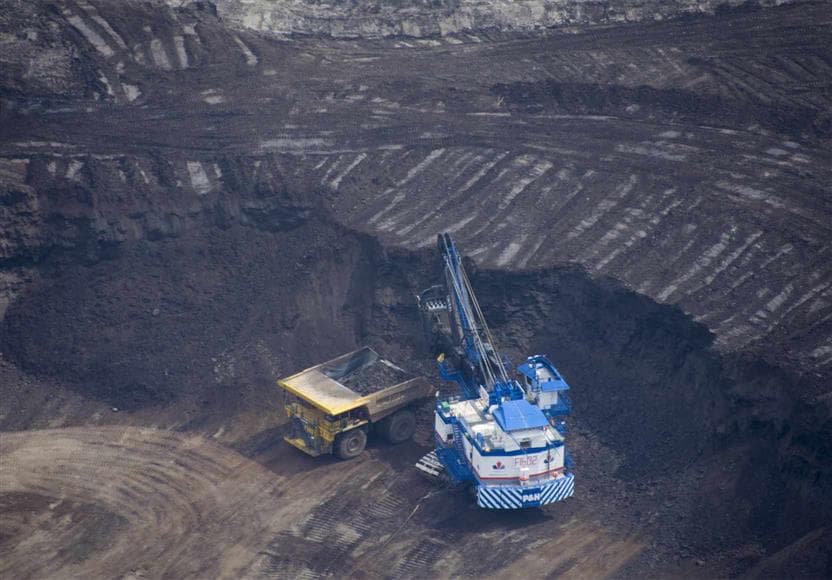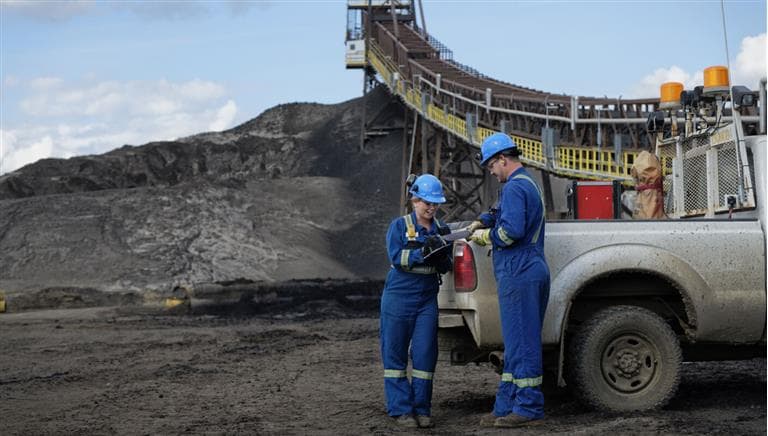As a major holder in the oil sands, Suncor will continue to deliver safe, reliable energy while focusing on growth, technical innovation and environmental sustainability.
Oil sands process and production
Oil sand is a mixture of bitumen, sand, clay and water. Because it does not flow like conventional crude oil which is a liquid, it must be mined or heated underground before it can be processed.
Once the bitumen has been extracted, we upgrade it into higher-value synthetic crude oil, diesel fuel and other products.
Suncor extracts bitumen in two ways: mining and in situ.
Mining
About 20% of Canada’s oil sands is close enough to the surface to be mined. Suncor uses large trucks and shovels to extract the oil sands that are near the surface (approx. 130-200 ft deep).
- Hot water is used to separate the bitumen from the sand. This step is called extraction. Bitumen is heated and sent to drums where excess carbon (in the form of petroleum coke) is removed.
- Vapours from the coke drums are sent to fractionators where they condense into naphtha, kerosene and gas oil.
- The end product is synthetic crude oil, which is shipped to refineries across North America to be further refined into jet fuels, gasoline and other petroleum products.
Our surface mining operations
Suncor owned and operated:
- Fort Hills
- Oil Sands Base Plant
- Millenium
- North Steepbank
- Base Mine Extension (proposed)
Suncor-operated joint venture:
- Syncrude
- Mildred Lake
- Aurora North
- Mildred Lake Extension (MLX) (proposed)
In situ
Approximately 80% of Canada’s oil sands are too deep to mine using the truck and shovel technique and must be tapped using in situ production, a three-part process to drill, inject steam and extract bitumen to the surface.









